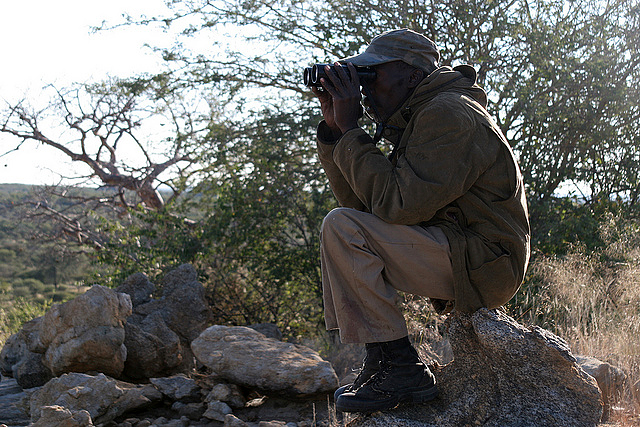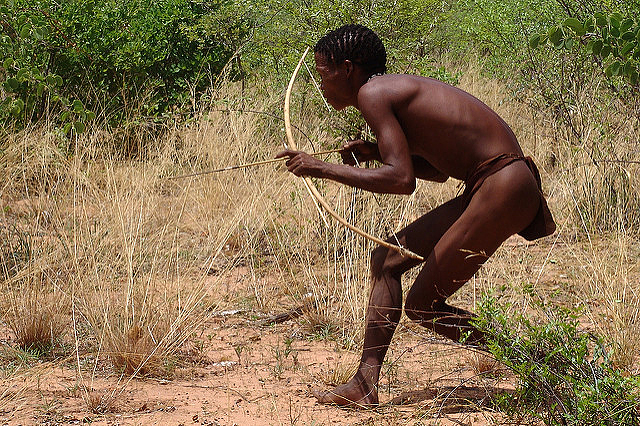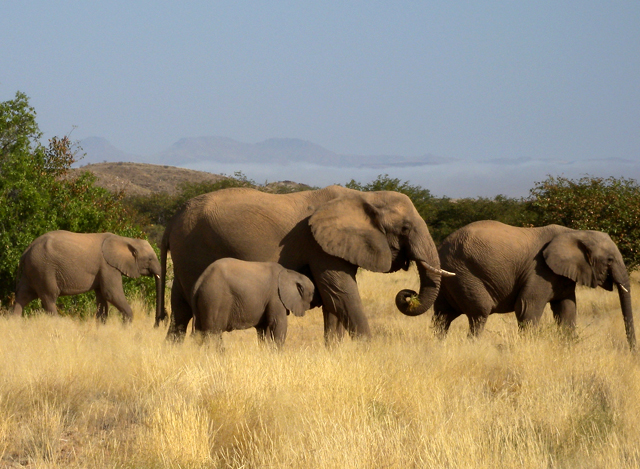An international game animal preservation organization has given its annual award for outstanding efforts to protect and promote wildlife to the Nyae Nyae Conservancy of the Ju/’hoansi San. According to an article in The Namibian last Thursday, the award was presented by the International Council for Game and Wildlife Conservation. The chief of the Ju/’hoansi, Tsamkxao ≠Oma, was presented the Edmond Blanc prize at an event held in the Safari Court Hotel in Windhoek on May 4.

The International Council for Game and Wildlife Conservation, known as the CIC after its French name, was founded in 1928 in Paris, though it is now based in Hungary. The organization seeks to promote conservation of natural resources through responsible, sustainable hunting. Members include representatives from the wildlife ministries of 26 nation states, many organizations that promote hunting, individual scientists, and private members from 86 countries. Members, many of whom are trophy hunters, are committed to effective wildlife management.
According to a Wikipedia article about the organization, the Edmond Blanc Prize “is given to hunting areas for excellent hunting practices and special achievements in the management of wildlife.” The prize was awarded not only to the Nyae Nyae Conservancy but also to Stephan Jacobs, a professional hunter with whom the conservancy contracts to manage hunting on the conservancy’s lands and to Namibia’s Ministry of Environment and Tourism.

In receiving the prize, Chief Tsamkxao ≠Oma described the traditional Ju/’hoansi hunting methods to the crowd gathered from around the world. He explained that in the past they hunted without making any noise and then remained with the carcass until the meat was finished, though they realized their own human smell would keep other game animals away.
The chief went on to say that since they founded the conservancy in 1998, they have created large management areas for game animals at some distance from their villages in order to sustain wildlife and to benefit the San people in the future. Hunting is now managed in accordance with quotas set by the Ministry of Environment and Tourism, which are based on game counts. This quota system mimics the traditional patterns of the Ju/’hoansi, who only hunted when they needed food.

Stephan Jacobs, a professional hunter who holds a contract with the conservancy to manage hunting on its lands, said that in 1970 there were no longer any elephants in the area. They first started migrating into the future conservancy in 1971 and not many years later there were 80 to 100 bull elephants in Nyae Nyae. He estimated that today there are between 1,500 and 2,000 elephants living in the conservancy.
Jacobs pointed out in his remarks that conservation hunting benefits all wildlife in the Nyae Nyae. The numbers of lions in the conservancy are up dramatically as are those of other game animals. While modern hunters use rifles to kill their cape buffaloes and elephants, the Ju/’hoansi still use their traditional hunting skills to track the game animals on foot. They may cover as many as 30 kilometers in one day.
Other benefits of the hunting program, which were also described in a recent research report, include jobs for conservancy rangers and cash payments to the Ju/’hoan villages. Also, about 30 tons of game meat was distributed to the villages, an additional benefit to their economies.